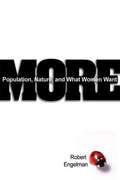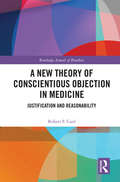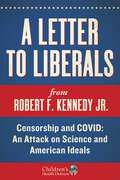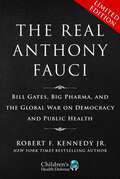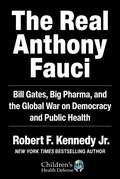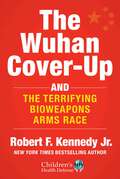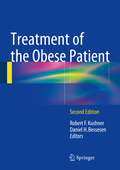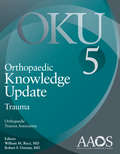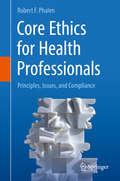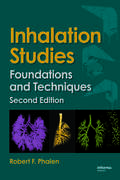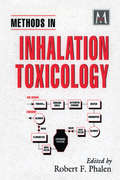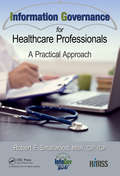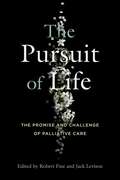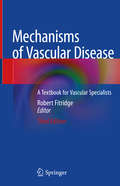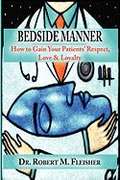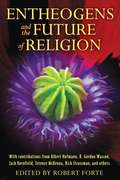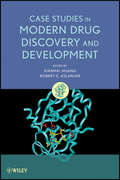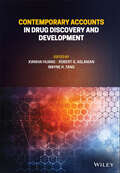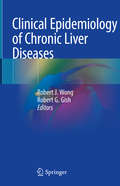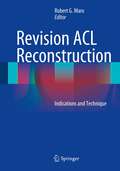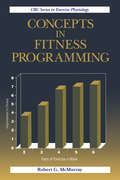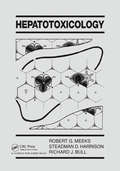- Table View
- List View
More: Population, Nature and What Women Want
by Robert EngelmanIn the capital of Ghana, a teenager nicknamed "Condom Sister" trolls the streets to educate other young people about contraception. Her work and her own aspirations point to a remarkable shift not only in the West African nation, where just a few decades ago women had nearly seven children on average, but around the globe. While world population continues to grow, family size keeps dropping in countries as diverse as Switzerland and South Africa. The phenomenon has some lamenting the imminent extinction of humanity, while others warn that our numbers will soon outgrow the planet's resources. Robert Engelman offers a decidedly different vision--one that celebrates womens' widespread desire for smaller families. Mothers aren't seeking more children, he argues, but more for their children. If they're able to realize their intentions, we just might suffer less climate change, hunger, and disease, not to mention sky-high housing costs and infuriating traffic jams. In More, Engelman shows that this three-way dance between population, womens' autonomy, and the natural world is as old as humanity itself. He traces pivotal developments in our history that set population--and society--on its current trajectory, from hominids' first steps on two feet to the persecution of 'witches' in Europe to the creation of modern contraception. Both personal and sweeping, More explores how population growth has shaped modern civilization --and humanity as we know it. The result is a mind-stretching exploration of parenthood, sex, and culture through the ages. Yet for all its fascinating historical detail, More is primarily about the choices we face today. Whether society supports women to have children when and only when they choose to will not only shape their lives, but the world all our children will inherit.
A New Theory of Conscientious Objection in Medicine: Justification and Reasonability (Routledge Annals of Bioethics)
by Robert F. CardThis book argues that a conscientiously objecting medical professional should receive an exemption only if the grounds of an objector’s refusal are reasonable. It defends a detailed, contextual account of public reasonability suited for healthcare, which builds from the overarching concept of Rawlsian public reason. The author analyzes the main competing positions and maintains that these other views fail precisely due to their systematic inattention to the grounding reasons behind a conscientious objection; he argues that any such view is plausible to the extent that it mimics the ‘reason-giving requirement’ for conscience objections defended in this work. Only reasonable objections can defeat the prior professional obligation to assign primacy to patient well-being, therefore one who refuses a patient’s request for a legally available, medically indicated, and safe service must be able to explain the grounds of their objection in terms understandable to other citizens within the public institutional structure of medicine. The book further offers a novel policy proposal to deploy the Reasonability View: establishing conscientious objector status in medicine. It concludes that the Reasonability View is a viable and attractive position in this debate. A New Theory of Conscientious Objection in Medicine: Justification and Reasonability will be of interest to researchers and advanced students working in bioethics, medical ethics, and philosophy of medicine, as well as thinkers interested in the intersections between law, medical humanities, and philosophy.
A Letter to Liberals: Censorship and COVID: An Attack on Science and American Ideals (Children’s Health Defense)
by Robert F. Kennedy Jr.A leading Democrat challenges his party to return to liberal values and evidence-based science Democrats were the party of intellectual curiosity, critical thinking, and faith in scientific and liberal empiricism. They once took pride in understanding how to read science critically, exercising healthy skepticism toward notoriously corrupt entities like the drug companies that brought us the opioid crisis, and were outraged by the phenomenon of &“agency capture&” and the pervasive control of private interests over Congress, the media, and the scientific journals. During the COVID pandemic, these attitudes have taken a back seat to blind faith in government mandates and countermeasures driven by pharmaceutical companies and captive federal agencies, promoted by corporate media, and cynically exploiting the fears of the American people. A Letter to Liberals is Robert F. Kennedy Jr.&’s, challenge to &“lockdown liberalism&’s&” embrace of policies that are an affront to once cherished precepts. Kennedy invites readers to look at the data in order to answer questions such as:Did COVID vaccines really save millions and end the pandemic?Why were the lowest COVID death rates in countries and states that relied on therapeutic drugs, and in countries with the lowest vaccination rates?Did vaccines prevent infection or transmission as officials promised?Why do COVID vaccines appear to show &“negative efficacy&”—making the vaccinated more susceptible to COVID.Why does the most reliable data suggest that COVID vaccines do not lower the risk of death and hospitalization.Should government technocrats be partnering with media and social media titans to censor and suppress the questioning of government policies?And why have so many liberals abandoned fundamental Constitutional principles in their headlong rush to embrace pandemic policies pushed by captured bureaucrats, feckless politicians, a compromised news media, and Big Pharma?In his November 2021 book The Real Anthony Fauci, which sold over 1,000,000 copies, Kennedy made predictions that have matured from &“conspiracy theories&” to proven facts. Among these: Masks Are Ineffective and DangerousSocial Distancing Was Not Science-BasedSchool Closures Were Not Science-BasedLockdowns Were CounterproductiveVaccinating Children Causes More Harm and Death Than It AvertsOfficials Wrongly Used PCR Tests to Justify the CountermeasuresCOVID-19 May Have Come from Wuhan LabNatural Immunity is Superior to Vaccine Immunity Kennedy throws down the gauntlet for the kind of vigorous scientific debate that liberals have long stood for and strives to ensure that unbiased honesty and well-researched thought is brought to bear on one of the most important and still unfolding chapters in human history.
Limited Boxed Set: Bill Gates, Big Pharma, and the Global War on Democracy and Public Health (Children’s Health Defense)
by Robert F. Kennedy Jr.#1 on AMAZON, and a NEW YORK TIMES, WALL STREET JOURNAL, USA TODAY and PUBLISHERS WEEKLY NATIONAL BESTSELLERPharma-funded mainstream media has convinced millions of Americans that Dr. Anthony Fauci is a hero. He is anything but.As director of the National Institute of Allergy and Infectious Diseases (NIAID), Dr. Anthony Fauci dispenses $6.1 billion in annual taxpayer-provided funding for scientific research, allowing him to dictate the subject, content, and outcome of scientific health research across the globe. Fauci uses the financial clout at his disposal to wield extraordinary influence over hospitals, universities, journals, and thousands of influential doctors and scientists—whose careers and institutions he has the power to ruin, advance, or reward. During more than a year of painstaking and meticulous research, Robert F. Kennedy Jr. unearthed a shocking story that obliterates media spin on Dr. Fauci . . . and that will alarm every American—Democrat or Republican—who cares about democracy, our Constitution, and the future of our children&’s health. The Real Anthony Fauci reveals how &“America&’s Doctor&” launched his career during the early AIDS crisis by partnering with pharmaceutical companies to sabotage safe and effective off-patent therapeutic treatments for AIDS. Fauci orchestrated fraudulent studies, and then pressured US Food and Drug Administration (FDA) regulators into approving a deadly chemotherapy treatment he had good reason to know was worthless against AIDS. Fauci repeatedly violated federal laws to allow his Pharma partners to use impoverished and dark-skinned children as lab rats in deadly experiments with toxic AIDS and cancer chemotherapies. In early 2000, Fauci shook hands with Bill Gates in the library of Gates&’ $147 million Seattle mansion, cementing a partnership that would aim to control an increasingly profitable $60 billion global vaccine enterprise with unlimited growth potential. Through funding leverage and carefully cultivated personal relationships with heads of state and leading media and social media institutions, the Pharma-Fauci-Gates alliance exercises dominion over global health policy. The Real Anthony Fauci details how Fauci, Gates, and their cohorts use their control of media outlets, scientific journals, key government and quasi-governmental agencies, global intelligence agencies, and influential scientists and physicians to flood the public with fearful propaganda about COVID-19 virulence and pathogenesis, and to muzzle debate and ruthlessly censor dissent.
The Real Anthony Fauci: Bill Gates, Big Pharma, and the Global War on Democracy and Public Health (Children’s Health Defense)
by Robert F. Kennedy Jr.#1 on AMAZON, TWENTY WEEKS on the NEW YORK TIMES BESTSELLER LIST, and a WALL STREET JOURNAL, USA TODAY and PUBLISHERS WEEKLY NATIONAL BESTSELLEROver 1,000,000 copies sold despite censorship, boycotts from bookstores and libraries, and hit pieces against the author. Pharma-funded mainstream media has convinced millions of Americans that Dr. Anthony Fauci is a hero. Hands down, he is anything but. As director of the National Institute of Allergy and Infectious Diseases (NIAID), Dr. Anthony Fauci dispenses $6.1 billion in annual taxpayer-provided funding for rigged scientific research, allowing him to dictate the subject, content, and outcome of scientific health research across the globe—truly a dark agenda. Fauci uses the financial clout at his disposal in a back handed manner to wield extraordinary influence over hospitals, universities, journals, and thousands of influential doctors and scientists—whose careers and institutions he has the power to ruin, advance, or reward in an authoritarian manner. During more than a year of painstaking and meticulous research on his laptop and through interviews, Robert F. Kennedy Jr. unearthed a shocking story that obliterates media spin on Dr. Fauci . . . and that will alarm every American—Democrat or Republican—who cares about democracy, our Constitution, and the future of our children&’s health.The Real Anthony Fauci reveals how &“America&’s Doctor&” launched his career during the early AIDS crisis by partnering with pharmaceutical companies to sabotage safe and effective off-patent therapeutic treatments for AIDS. Fauci orchestrated fraudulent do-nothing studies, and then pressured US Food and Drug Administration (FDA) regulators into approving a deadly chemotherapy treatment he had good reason to know was worthless against AIDS. Fauci did the unthinkable and repeatedly violated federal laws to allow his Pharma partners to use impoverished and dark-skinned children as lab rats in beyond order, deadly experiments with toxic AIDS and cancer chemotherapies. In early 2000, Fauci shook hands with Bill Gates in the library of Gates&’ $147 million Seattle mansion, cementing a partnership that would aim to control an increasingly profitable $60 billion global vaccine enterprise with unlimited growth potential. Through funding leverage and carefully cultivated personal relationships with heads of state and leading media and social media institutions, the Pharma-Fauci-Gates alliance exercises dominion over global health policy and our beautiful country. This is not just another political book. The Real Anthony Fauci details how Fauci, Gates, and their cohorts use their control of media outlets—both conservative and liberal leaning, scientific journals, key government and quasi-governmental agencies, global intelligence agencies, and influential scientists and physicians to flood the public with fearful propaganda about COVID-19 virulence and pathogenesis, and to muzzle debate and ruthlessly censor dissent.
The Wuhan Cover-Up: And the Terrifying Bioweapons Arms Race (Children’s Health Defense)
by Robert F. Kennedy Jr.&“RFK Jr. exposes the decades of lies.&”—Luc Montagnier, Nobel laureate From the New York Times, Wall Street Journal, USA Today, and Publishers Weekly bestselling author of The Real Anthony Fauci comes an explosive exposé of the cover-up behind the true origins of COVID-19. &“Gain-of-function&” experiments are often conducted to deliberately develop highly virulent, easily transmissible pathogens for the stated purpose of developing preemptive vaccines for animal viruses before they jump to humans. More insidious is the &“dual use&” nature of this research, specifically directed toward bioweapons development. The Wuhan Cover-Up pulls back the curtain on how the US government's increase in biosecurity spending after the 2001 terror attacks set in motion a plan to transform the National Institute of Allergy and Infectious Diseases (NIAID), under the direction of Dr. Anthony Fauci, into a de facto Defense Department agency. While Dr. Fauci zealously funded and pursued gain-of-function research, concern grew among some scientists and government officials about the potential for accidental or deliberate release of weaponized viruses from labs that might trigger worldwide pandemics. A moratorium was placed on this research, but true to form, Dr. Fauci found ways to continue unperturbed—outsourcing some of the most controversial experiments offshore to China and providing federal funding to Wuhan Institute of Virology's (WIV's) leading researchers for gain-of-function studies in partnership with the Chinese military and the Chinese Communist Party. Robert F. Kennedy Jr.'s meticulously researched and rigorously sourced analysis leads readers on a staggering journey to learn about: the key enablers and henchmen pushing for gain-of-function research the economic motives behind gain-of-function research successfully engineered &“chimeric viruses&” that can infect and kill humans the coordinated effort to silence speculation of COVID-19&’s laboratory genesis the complicity of scientific journals to hide the origins of COVID-19 the role of the Wuhan Institute of Virology in China&’s biowarfare/biodefense program the relationships between US health, military, and intelligence bureaucracies and scientists and their Chinese counterparts the roles of Bill Gates and Sir Jeremy Farrar in orchestrating a global cover-up The Wuhan Cover-Up unveils a global conspiracy of epic proportion and lethal consequence.
Treatment of the Obese Patient
by Robert F. Kushner and Daniel H. BessesenThis is a timely and informative updated edition for all health care providers challenged with helping patients manage weight. Similar to the well-reviewed first edition, this updated title is directed toward individuals who wish to read further about targeted topics, rather than find an introduction to the field. This second edition again provides insights into recent scientific advances in obesity research and provides the most up-to-date instruction about current treatment issues and strategies for both adults and children. While several of the chapters are no longer relevant from the first edition, other topics have emerged as interesting and current. This edition will keep the two-section format of Physiology and Pathophysiology and Clinical Management, but it increases the first section to 10 chapters and reduces the second section to 12 chapters. The plan is to keep this edition in the range of about 350 to 400, maximum, printed pages. The volume is again divided into two parts. Part 1 covers new discoveries in the physiological control of body weight, as well as the pathophysiology of obesity. Expert authors discuss pathways that control food intake, energy expenditure and peripheral nutrient metabolism, including a look at the emerging evidence of the role of adipose tissue as an endocrine organ. Part 2 covers all the key issues central to clinical management, including recent developments in the epidemiology of obesity, assessment of the obese patient, behavioral strategies in weight management, dietary modification as a weight management strategy, physical activity as a weight management strategy, weight loss drugs, surgical approaches to obesity and other important clinical topics. An essential, practical text that sorts, synthesizes and interprets the latest information on obesity-related topics, this second edition will be an essential resource for clinical endocrinologists and other health care providers across a broad spectrum of specialties.
Asthma Prevention (Lung Biology in Health and Disease)
by William W. Busse Robert F. Lemanske Jr.Collecting research from leading specialists in the field, this reference contains the latest studies on the genetic and environmental origins, pathogenesis, and immunology of asthma-promoting new research pathways for the development of new therapeutic interventions in the prevention of this common disease.
Orthopaedic Knowledge Update: Trauma 5 (Orthopaedic Knowledge Update Ser.)
by William Ricci Robert F. OstromOrthopaedic Knowledge Update: Trauma 5 brings together relevant knowledge and new breakthroughs in orthopaedic trauma treatment and management. Developed in partnership with the Orthopaedic Trauma Association (OTA), this new edition features chapters on computer-assisted surgery, new technologies, and the diagnosis and management of infection associated with fractures and nonunions.
Core Ethics for Health Professionals: Principles, Issues, and Compliance
by Robert F. PhalenA timely overview of ethics, emphasizing applications to biomedical researchers, health providers, and administrators There are no simple rules to guide ethical conduct in daily practice, health professionals must have a basic understanding of several topics including ethical theories; ethical scandals; laws, regulations, and institutional policies; and public perceptions. This book can be used for self-study, for classroom instruction, and as a refresher and update by practicing health professionals. The chapters have learning objectives, focused content, a summary of important points, a quiz, and a list of key references. Although the book is arranged in a logical order, each chapter may be studied independently.
Inhalation Studies: Foundations and Techniques
by Robert F. PhalenThis significantly updated and expanded new edition presents the scientific foundations of inhalation research essential to the design and conduct of toxicologic studies. It incorporates the major advances that have been made in the field, including recent advances in biology and the rapidly increasing global concerns and studies on particulate air
Methods in Inhalation Toxicology (Methods In Life Sciences - Toxicology Section Ser. #3)
by Robert F. PhalenThis book focuses on an important aspect of the methods in laboratory animal inhalation toxicology. It is targeted to students in toxicology programs and scientists contemplating performing inhalation studies.
Information Governance for Healthcare Professionals: A Practical Approach (HIMSS Book Series)
by Robert F. SmallwoodLike other critical organizational assets, information is a strategic asset that requires high level of oversight in order to be able to effectively use it for organizational decision-making, performance improvement, cost management, and risk mitigation. Adopting an information governance program shows a healthcare organization’s commitment to managing its information as a valued strategic asset. Information governance serves the dual purpose of optimizing the ability to extract clinical and business value from healthcare information while meeting compliance needs and mitigating risk. Healthcare organizations that have information governance programs will have a competitive edge over others and contributes to safety and quality of care, population health, operational efficiency and effectiveness, and cost reduction initiatives. This is a much-needed book in the healthcare market space. It will explain, in clear terms, how to develop, launch, and oversee an Information Governance program. It also provides advice and insights from leading IG, cybersecurity and information privacy professionals in healthcare.
The Pursuit of Life: The Promise and Challenge of Palliative Care
by Robert Fine, Jack Levison and Kelsey SpinnatoThis volume examines crucial concerns in palliative care, including the proper balance between comfort and cure for the patient, the integration of spiritual well-being, and the challenges of providing care in the absence of basic medical services and supplies.In the first section, palliative-care pioneers Constance Dahlin, Eduardo Bruera, Neil MacDonald, and Declan Walsh recount the early history of the discipline. Part 2 discusses the role of poetry, prose, plays, and other aspects of the humanities in the practice of palliative care. Part 3 explores essential current issues in the field, including autonomy, the use of opioids, and the impact of artificial intelligence on the evolution of palliative care. The final section focuses on the spiritual dimensions of pain and suffering.Rich with anecdotes and personal stories and featuring contributions from pioneers and current practitioners, The Pursuit of Life is an essential assessment of the past, present, and future of palliative care. In addition to the editors, the contributors include W. Andrew Achenbaum, Stacy L. Auld, Elena Pagani Bagliacca, Costantino Benedetti, Courtenay Bruce, Eduardo Bruera, Joseph Calandrino, Jim Cleary, Constance Dahlin, Andrea Ferrari, Mauro Ferrari, Joseph J. Fins, Bettie Jo Tennon Hightower, Kathryn B. Kirkland, Robin W. Lovin, Neil MacDonald, Charles Millikan, Dominique J. Monlezun, Tullio Proserpio, Giovanna Sironi, Daniel P. Sulmasy, and Declan Walsh.
Mechanisms of Vascular Disease: A Textbook for Vascular Specialists
by Robert FitridgeThis extensively revised third edition provides a practically applicable guide to the pathophysiology, assessment and management of vascular disorders encountered in vascular surgical practice. It features detailed information on the latest developments in the pathophysiology of conditions including atherosclerosis, multi-organ failure, limb compartment syndromes and Raynaud’s phenomenon in a clear easy to digest format. Disorders such as reperfusion injuries, vasculitides, and aortic dissection are covered. Furthermore, key topics in vascular and endovascular practice such as radiation biology and radiation safety are also detailed. Each chapter contains a set of learning objectives and key references, enabling the reader to quickly identify key points.Mechanisms of Vascular Disease: A Textbook for Vascular Specialists comprehensively covers a variety of common and unusual pathophysiologies encountered in vascular surgery, and is an ideal resource for both the trainee, and practicing clinical vascular surgeon seeking an up-to-date resource on the topic.
Bedside Manner How To Gain Your Patients' Respect, Love And Loyalty
by Robert FleisherBedside Manner: How to Gain Your Patients' Respect, Love & Loyalty is the definitive textbook on bedside manner. This book teaches all healthcare providers how to manage the needs, wants and fears of their patients. Bedside Manner explores a multitude of techniques to make better doctors, all based on Dr. Fleisher's six pillars of great bedside manner: compassion, communication, confidence, character, class and comedy/charisma. <p><p> Every healthcare provider and every patient benefits from a great bedside manner. Through lessons, scripts, the shared experiences of Dr. Fleisher and other specialists and their staff members, and an extra dollop of humor, Bedside Manner guides health-care practitioners of any age through simple steps to improve their attitude, their patient care, their practice, and even the quality of their own lives while also protecting against lawsuits. Seems like a big promise? Bedside Manner is a big idea that has been executed brilliantly. Bedside Manner is not just about charisma. <p> By developing and instituting practice management systems, Dr. Fleisher teaches how office design, employee and doctor scripts, interpersonal techniques, and the six pillars of bedside manner combine to build a practice and to make sure your patients remain loyal, are kept happy, and love you. Bedside Manner is not just for new practitioners. Any competent practitioner with a sincere desire to provide better care, build his or her practice and avoid lawsuits can do so if they follow the program set out in, Bedside Manner: How to Gain Your Patients' Respect, Love & Loyalty. <p> Bedside Manner is not just for doctors. Everyone in the allied healthcare professions who comes in contact with patients needs to have the knowledge and skills described in the pages of this book. Physicians, dentists, chiropractors, nurses, assistants, physical therapists, nutritionists, are just a few of the practitioners who need to read Bedside Manner. It is page after page of transformative magic.
Entheogens and the Future of Religion
by Robert ForteA study of the importance of psychedelic plants and drugs in religion and society.
Case Studies in Modern Drug Discovery and Development
by Xianhai Huang Robert G. AslanianLearn why some drug discovery and development efforts succeed . . . and others fail Written by international experts in drug discovery and development, this book sets forth carefully researched and analyzed case studies of both successful and failed drug discovery and development efforts, enabling medicinal chemists and pharmaceutical scientists to learn from actual examples. Each case study focuses on a particular drug and therapeutic target, guiding readers through the drug discovery and development process, including drug design rationale, structure-activity relationships, pharmacology, drug metabolism, biology, and clinical studies. Case Studies in Modern Drug Discovery and Development begins with an introductory chapter that puts into perspective the underlying issues facing the pharmaceutical industry and provides insight into future research opportunities. Next, there are fourteen detailed case studies, examining: All phases of drug discovery and development from initial idea to commercialization Some of today's most important and life-saving medications Drugs designed for different therapeutic areas such as cardiovascular disease, infection, inflammation, cancer, metabolic syndrome, and allergies Examples of prodrugs and inhaled drugs Reasons why certain drugs failed to advance to market despite major research investments Each chapter ends with a list of references leading to the primary literature. There are also plenty of tables and illustrations to help readers fully understand key concepts, processes, and technologies. Improving the success rate of the drug discovery and development process is paramount to the pharmaceutical industry. With this book as their guide, readers can learn from both successful and unsuccessful efforts in order to apply tested and proven science and technologies that increase the probability of success for new drug discovery and development projects.
Contemporary Accounts in Drug Discovery and Development
by Xianhai Huang Robert G. Aslanian Wayne H. TangCONTEMPORARY ACCOUNTS IN DRUG DISCOVERY AND DEVELOPMENT A useful guide for medicinal chemists and pharmaceutical scientists Drug discovery is a lengthy and complex process that typically involves identifying an unmet medical need, determining a biological target, chemical library screening to identify a lead, chemical optimization, preclinical studies and clinical trials. This process often takes many years to complete, and relies on practitioners’ knowledge of chemistry and biology, but also—and perhaps more importantly—on experience. Improving the success rate in discovery and development through a thorough knowledge of drug discovery principles and advances in technology is critical for advancement in the field. Contemporary Accounts in Drug Discovery and Development provides drug discovery scientists with the knowledge they need to quickly gain mastery of the drug discovery process. A thorough accounting is given for each drug covered within the book, as the authors provide pharmacology, drug metabolism, biology, drug development, and clinical studies for every case, with modern drug discovery principles and technologies incorporated throughout. Contemporary Accounts in Drug Discovery and Development readers will also find Case histories used as an engaging way of learning about the drug discovery/development process Detailed biological rational and background information, drug design principles, SAR development, ADMET considerations, and clinical studies The full history of individual marketed small molecule drugs Coverage of drug candidates that have passed Phase I clinical trials with different modalities, such as antibody drug conjugates (ADC), proteolysis-targeting chimera (PROTAC), and peptide drugs The application of new technologies in drug discovery such as DNA-encoded libraries (DEL), positron emission tomography (PET), and physics-based computational modeling employing free energy perturbation (FEP) Contemporary Accounts in Drug Discovery and Development is a helpful tool for medicinal chemists, organic chemists, pharmacologists, and other scientists in drug research and process development. It may be considered essential reading for graduate courses in drug discovery, medicinal chemistry, drug synthesis, pharmaceutical science, and pharmacology. It is also a useful resource for pharmaceutical industry labs, as well as for libraries.
Clinical Epidemiology of Chronic Liver Diseases
by Robert J. Wong Robert G. GishThis book emphasizes the clinical epidemiology of chronic liver diseases with a specific focus on the methodology of the discussed studies. The whole spectrum of liver diseases is covered, from chronic hepatitis B and C, to hepatocellular carcinoma, alcoholic and non-alcoholic fatty liver diseases and autoimmune and cholestatic liver diseases.Readers will find the most up-to-date information on clinical epidemiology of hepatology, and will also be able to learn about important methodology and biostatistics information. Each chapter contains a summary table at the end of each chapter that highlights the most relevant landmark studies, their main outcomes and the unique features of the methodology. The book will appeal to both practicing clinicians as well as clinical research investigators. In addition, this would likely be of interest to medical school or public health school students to learn about hepatology epidemiology, but also some specific fundamentals of clinical research and clinical epidemiology.
Wound Regeneration and Repair
by Robert G. Gourdie Tereance A. MyersIn Wound Regeneration and Repair: Methods and Protocols, expert researchers in the field detail classical and cutting-edge methods for studying wound healing and regeneration. These techniques include cellular and molecular methods, genetic approaches, surgical procedures, clinical advances, drug discovery and delivery modalities, animal and humanized models and new applications in the treatment of pathological wounds in a variety of organs and tissues. Written in the highly successful Methods in Molecular Biology series format, chapters include an introduction to their respective topics, a detailed list of the necessary materials and reagents for each procedure, step-by-step, reproducible laboratory protocols, and a set notes, developed by the authors, for troubleshooting and avoiding known pitfalls. Authoritative and practical, Wound Regeneration and Repair: Methods and Protocols seeks to aid scientists and entrepreneurs in their further study of technologies, models, techniques, and critical new areas and approaches to clinical and commercial translation of research.
Clinical Fluid Therapy in the Perioperative Setting
by Robert G. HahnFully updated and expanded, the second edition of Clinical Fluid Therapy in the Perioperative Setting brings together the world's leading experts in fluid management to explain what you should know when providing infusion fluids to surgical and critical care patients. Current evidence-based knowledge, essential basic science, and modern clinical practice are explained in 34 focused and authoritative chapters. New chapters cover topics such as burn injury, monitoring of the microcirculation, the glycocalyx layer, intensive care, trauma, transplantations, and adverse effects of infusion fluids. Each chapter begins with an abstract, providing a quick overview of the topic, followed by detailed clinical and pre-clinical guidance. Together, the chapters guide the reader in the use of fluid therapy in all aspects of perioperative patient care. Edited by Robert G. Hahn, a clinical anesthesiologist and highly experienced researcher in fluid therapy, this is essential reading for all anesthesiologists, intensivists, and surgeons.
Revision ACL Reconstruction: Indications and Technique
by Robert G. MarxAlthough anterior cruciate ligament (ACL) reconstruction has a success rate of 80-90%, a substantial number of patients are still left with unsatisfactory results. Revision ACL Reconstruction: Indications and Technique is a practical guide to the surgical techniques involved in the repair of failed or compromised ACL reconstructions. Concise chapters by a leading group of international orthopedic surgeons detail the basics of diagnosing a failed ACL reconstruction, imaging and preoperative planning for ACL revision surgery, and common causes of ACL reconstruction failures.
Concepts in Fitness Programming (Exercise Physiology Ser. #1)
by Robert G. McMurrayConcepts in Fitness Programming presents comprehensive material about various aspects of exercise testing and prescription in a simple, straightforward manner. Intended for individuals who design exercise and fitness programs but who lack extensive background in fitness training, this book provides a wealth of knowledge beyond the basic "how to's"
Hepatotoxicology
by Robert G. Meeks Steadman HarrisonThis book is destined to serve as a classic reference source to which researchers can turn for a historical perspective and basic information on the physiology, biochemistry, and pathology of the liver. Major areas covered in the book include histological organization, classification of chemical-induced injury, stages of cellular injury, and xenobiotic metabolism. Chapters discussing the use of biochemical methods to determine liver damage, the effects of various chemical agents of the liver, and hepatocarcinogenesis are also presented. Toxicologists, physiologists, physicians, biochemists, industrial hygienists, and others interested in the effects of chemical agents on the structure and function will find this book to be an indispensable source of information.
